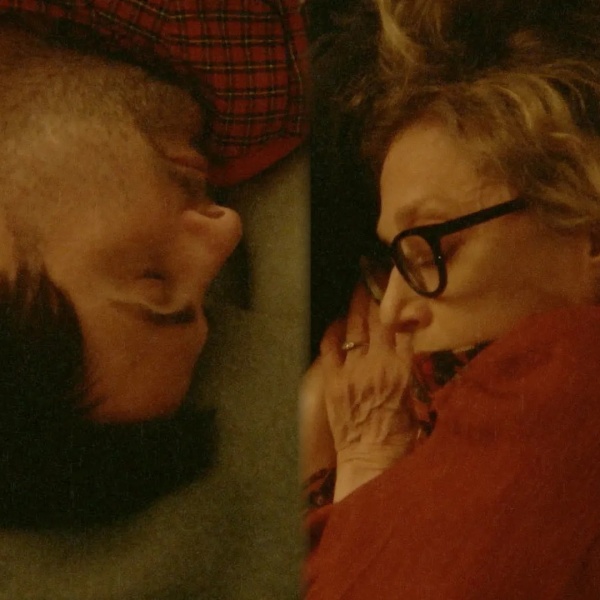Everyone’s talking about where the Sundance Film Festival will live in the future, but a more compelling question may be this: How do independent filmmakers plan to distribute their films and create real careers when even Sundance — wherever it may be based — is not enough?
That’s not a knock on Sundance, or on any festival; it’s recognizance that the world has changed. Many films don’t sell, even at Sundance. The decline in theatergoing, the change in streamers’ strategies, the rise of arthouse events: No one knows what the new normal is, but today putting faith in selling a movie at its premiere and living happily ever is not even a fairy tale; it’s a toxic myth.
That’s why (with Brian Newman’s kind permission) we’re reprinting his May 23 column from Newman’s weekly Sub-Genre Media Newsletter. He called it Film 101: New Rules for Distribution, but I think that may sell it short. In plain, cut-to-the-chase language, the column addresses many of the systemic problems we’re seeing in film, and independent film in particular.
He’s not a filmmaker or distributor in the traditional sense. Newman is a former festival director (Atlanta, Tribeca) and film producer who now operates strategic consultancy Sub-Genre. He works on all kinds of projects, but spends a good deal of his time working with brands who want to make original films as part of their marketing strategies. (Yeti, REI, et. al.)
What makes Newman’s insight valuable is he’s a little bit (probably more than that) obsessed with how independent film really works, and often doesn’t. Change is his favorite topic and since he travels to film festivals and summits all over the world, he’s exquisitely attuned to how it’s happening in real time. As to what led to this column, this is what he said.
“I wrote this because it’s the kind of information that a lot of the industry talks about over drinks, or in Zooms, or closed-door meetings, but that rarely gets written about in a place where the average filmmaker can read about it and think about how it applies to their films,” he wrote over email. “There are a lot of myths out there about how one can premiere at a place like Sundance, and sell to the highest bidder and not have to think about their distribution, much less how they’re being marketed. That world has mostly disappeared, and we need to start addressing the film world we have today, not what it was or what we hoped it would become again.”
It’s not all bad news — some of it is quite good — but it’s honest and unvarnished. He says what many people believe, but there’s few in the industry who will put their names to it. (Hat tip to Ted Hope, a key exception.) This is a must read for anyone who makes films, or wants to make them, or has friends who resemble that description. —Dana Harris-Bridson, Editor-in-Chief
You can subscribe to Brian Newman’s Sub-Genre Media Newletter here.
————
Here’s the current “Rules of the Game” for distribution as of May 2024. This could all change before September, but I bet this will be pretty true through most of 2025. (That’s a prediction; let’s see whether I’m right or wrong).
1. Streamers rarely show up
Someone told me the other day that when they surveyed filmmakers at a recent conference, everyone’s plan was essentially the same — get into Sundance, or another major festival and sell to Netflix, or another major streamer. To state the obvious: Those days are done. Over. The major streamers are not showing up at the bargaining table for 99 percent of the films being made today, even the ones that get into Sundance. When they do show up, it’s either because a film is big — meaning it has big stars, a name director, and/or killer subject matter (and usually all of these); or, because they feel it’s an Academy contender.
I know you think your film is all of the above, but it probably isn’t and selling to a major streamer is likely not gonna happen. This is nothing against your film; it may be great. But the major streamers are chasing subscribers and (increasingly) advertisers, which means a move toward much more commercial fare, and lowest-common-denominator stuff (reality TV), which brings the eyeballs. A few prestige projects are all they need, and there are too many good ones to pick from, so they have it easy.
2. Distributors have lost the Pay 1 window
Most of the next layer of distributors — the ones who release films in theaters and would typically have an output deal or something close to it with a major streamer, have lost those deals. Or they’re expiring later this year. That represented a big chunk of change for them. They knew they had a safety net; they could take more risks on what they would buy or pay more for something, knowing that Hulu (or whoever) would come in with X amount of dollars for anything they released.
The loss of these deals is probably the biggest crisis facing the field right now; it has changed everything. That means most of these distributors must be much safer on what they buy, and when they do buy they often can’t afford to pay as much for the film. In fact, they often don’t think they can make back what you probably spent on your movie, so you’ll often hear about offers that are substantially less than the “negative cost” of your movie.
3. Transactional revenues are down and for docs, they’ve fallen off the cliff
Just a few years ago, maybe even a year ago, one could count on making a good amount of money when your film went to transactional windows — PVOD, or premium VOD, where people pay around $20 USD for early access to a film, or in TVOD, where people pay a smaller fee to rent or buy the film a little bit later. But now that most consumers have between 4-6 subscription services in their monthly bill, many of them are not willing to spend money on a movie when they can probably wait and see it on SVOD later. Of course, per one and two above, that film might not ever end up on SVOD, but the audience doesn’t always know this and forgets by that time, anyway.
On the positive side of things here, most distributors seem to be reporting that for a decent narrative/fiction film, there’s still a pretty healthy transactional window. It’s down from years ago, but these revenues can still be decent; good reviews, good marketing and buzz from a theatrical release can help. The bad news here is that this isn’t true for documentary films. With just a couple of exceptions each year, people just aren’t paying to rent or buy documentaries on transactional platforms anymore. Most distributors and aggregators will tell you that for docs, transactional has “fallen off a cliff,” which means they can take even fewer of those. This is also because of the next point.
4. Documentaries don’t work theatrically anymore
A curious thing has been happening since COVID: Audiences are coming back to movie theaters, especially the better-run/curated arthouses (more on this below), but people are not showing up for documentary films. Audiences are watching these films at film festivals so an audience is out there, but they don’t buy a ticket for a regular release. There are exceptions, of course, and a few “big” docs will do OK. But most documentaries have to rely on event-based releases, four-walls, and service deals (more on all of this below). People might show up for a one-night-only event, with a great Q&A, but they won’t be there for the matinees, much less the Tuesday evening showing, and week-long runs rarely make sense anymore (but people do them to qualify for the Oscars).
5. But theatrical has never been more important, or interesting
While audiences might not be showing up for docs, they are showing up for other things. Many of the better and curated arthouses say that audiences are showing up for strong narratives, and there’s a growing sense that the theatrical window is becoming more important than ever before. If a film can make it past that first week and be doing well, the word of mouth can spread. In addition, younger audiences are coming back to theaters, especially for repertory cinema and special events. There’s a bit of a problem in getting screens — it’s a crowded marketplace in arthouse land (not the case with the megaplexes right now).
On the other hand, many exhibitors have told me that they often lose out on getting some of the bigger arthouse films that would bring them more revenue: Bigger distributors are going for bigger footprints, which they can only get from the bigger chains and megaplexes. Nothing is perfect in exhibition land, but aside from docs, theatrical is looking interesting.
6. Event-releasing is key
As I mentioned above, audiences do seem to show up when you give them something special. When you “event-ize” your screening, audiences will show up, and this is especially true for documentary films. Have a one- or two-night-only screening event, bring in the director (and subjects or cast) for a Q&A, have a party, offer free beer, have a music performance… whatever makes it special. This also works for smaller narrative films that might not be able to get a booking without a four-wall (rental of the theater). When done right, you might get more people in one night than you’d get in an entire week-long run for some films, and everyone — filmmakers, audiences and theaters — are much happier.
7. You need to own your distribution, and you must budget for it
I’ve been telling people this for years, and no one wants to listen. For a few years, you could even get away with not doing this, because the market was that strong. But not anymore. At my day job here, we work with our better brand clients to plan for distribution before they even shoot their films. We start by building what I call our Plan A — it’s everything we can do with our resources (time, money, people, and brands can add things like their owned & operated channels, retail stores, etc.) — and assume we won’t sell to a major distributor. Any indie can do this same thing; you just might not have the same level of resources as a brand.
This plan comes with a budget. For brands it might be about 1/3 to 1/2 of what they plan to spend on the film itself. For an indie, it might be a lot less, but you must have a budget and a way to raise those funds (this is not easy, I know). If you have a good budget, you can hire a service deal booker/distributor and impact producer, and PR and marketing, and have a team to help you. If you have less money, you can do it with (paid) interns and a smart strategy. You have to adjust this plan to your reality, but you still need a plan.
Later, when you get to some film festival and any distributor offers a deal (if one arises), that’s a Plan B. Because you already have a Plan A, you now have something to negotiate — can you carve out certain rights? The distributor isn’t doing a few things in your Plan A; can you keep those rights, or get them to do something better? In the best case, you come up with a hybrid of Plan A and Plan B, which we call Plan C – this is the best of your two plans, combined. In some cases, Plan C is your new plan without a distributor, but it’s been made better based on what you learned in negotiating (maybe you stole an idea…). If their Plan B is actually better, you will likely still use some of your Plan A, and use some of the funds you saved — maybe you can now pay for your E&O and delivery costs. Maybe you can afford to put money into a good social media campaign because your distributor (unless it’s named A24 or Neon) won’t know how to do that at all. But if you didn’t plan, and you didn’t raise some funds, you are in a very bad place in 2024.
8. If you’re not a U.S. filmmaker, this sounds crazy, but it’s still true
I gave a talk about this with a group of filmmakers from Europe last week, and their jaws dropped. Why would we spend money on distribution or marketing? Isn’t that the distributor’s job? Great question, and I understand the mindset. But that’s old-world thinking. There’s a very good chance you won’t get US distribution for your film. And you probably need some form of U.S. theatrical and distribution to close other international deals. (This is pretty common.)
So, your sales agent might take a deal from a tiny U.S. distributor for a very low minimum guarantee, and guess what — your film won’t perform well here, but you’ll close those other deals and be on to your next film. But if you raise some funds, you could do a service deal with a distributor or booker in the U.S., and keep your rights, get a better release, build your fanbase and audience, and maybe come out ahead. That’s much better than getting no distribution in the U.S. or very poor distribution in the U.S. This is a tough one, I know, but humor me — it even pays for international filmmakers to think about doing this, because it can be better for your film and your career.
9. This works better if you are making a film for a very specific, sizable, underserved audience
Look at the recent success of Angel Studios. Or look back at Tyler Perry. Or take a look at the old case studies for IndieGame: The Movie, or BURN. In all of these cases, the filmmakers identified a core audience that was not being served by the media; their niche was not small, but quite large, and it was begging for good films. I always tell people: Make a film that’s film festival- and distributor-proof. Meaning: It doesn’t matter whether you get into any film fest, or if no distributor buys your film, because you have such a sizable potential audience that is hungry for your film that you can go directly to them and succeed. As I’ve written before, this is my new recipe for success: Identify these groups of audiences, and build a brand for them — and you will profit.
10. Luckily, there are new tools to help with some of this distribution and marketing stuff, but you have to use and embrace them
Finding success in today’s marketplace is tough, but things are a little bit easier now because we have tools we didn’t have before. Most obviously, we have social media — especially Instgram, TikTok, and Letterboxd. You can use these to find your audience, but only if you embrace them — and these need to be done by filmmakers. While everyone I know is on social media all day long, too few filmmakers adopt it for promoting their films and their careers.
I met one producer this week whose entire business model is financing not just the film but also their social media campaigns. They’ll build a social strategy before they shoot and they’ll prep materials while they’re shooting to build an audience early; they also will have a folder full of stuff to share once the film releases to the public. They’ll shoot vertical video for Insta and TikTok; they’ll have their cast record simple videos from the set, which they can use later. They’ll pre-record intros to theater audiences around the country (Hello, Nashville! Thanks for coming to see our movie) to personalize their screenings. But these have to be authentic and in the “voice” of the filmmakers and your cast/subjects.
In addition to the obvious social media tools, we also have new systems. Kinema has been building a suite of tools for filmmakers to own their distribution, and I recommend checking them out. There’s also Artinii, which lets you send your film securely without the cost of a DCP and opens up many nontheatrical opportunities.
This year also saw the launch of Jolt, which is using new tech, machine learning, and smart use of data to help filmmakers aggregate audiences for their films. It’s in beta now, and not open for everyone, but I suspect it will be by next year. You can also learn a lot more about this stuff from the good work of Distribution Advocates, who now have a podcast on distribution, and a new grant to assist with new marketing ideas for distribution. There’s also been a lot of work behind the scenes lately — Sundance’s Catalyst is helping to bring investors to this space, and I know many investors who are starting to look at financing distribution/marketing, not just the making of new films. My hope is we’ll see a lot of new activity in this space, and a lot of it will be more public, later this year.
Last, I am hoping this might be the year that more filmmakers will embrace YouTube — our biggest distribution system, but one very underused by filmmakers. At minimum, people should be using it more for their trailers, outtakes, behind-the-scenes, and the like. You may think your film couldn’t work there, but I beg to differ, and can offer a great example. Check out animator Patrick Smith’s YouTube channel. Go look at his community page, where he’s not just posting behind-the-scenes of his animation process, but asking his audience what they want to see. He even uses it to test ideas and get feedback on his edits on works-in-progress, thus building his audience while refining his art. Read this interview with him in ASIFA East, which is chock-full of awesome ideas for how indies can use YouTube to build an audience and a career — he’s making a healthy six-figure salary from his YouTube work alone now, and he argues that no one would have thought his little animations would work there before he did it. It seems obvious now, but it wasn’t when he started. Granted, this works a lot better for short work, and animation has a big, underserved audience, but if you read his interview with an open mind I think you’ll see how it can also help the average indie/arthouse film as well.
So, that’s the general state of film distribution right now in 2024, along with a few hopes for the future. The main takeaway should be: Don’t put all of your faith in selling your film to a major distributor or streamer; own your destiny. It’s always been a smart strategy for savvy filmmakers (DIY distribution is a very old concept), but right now, in this market — it’s the only strategy that makes any sense.
Note, after writing this on Tuesday night, but before posting it today, I noticed Ted Hope wrote a similar newsletter on the need for new thinking in distribution. I recommend checking out his thoughts too. Several good minds are all thinking about the same things, it seems. Matt Kohn also sent me this great Reel on the situation, which is worth a watch.







